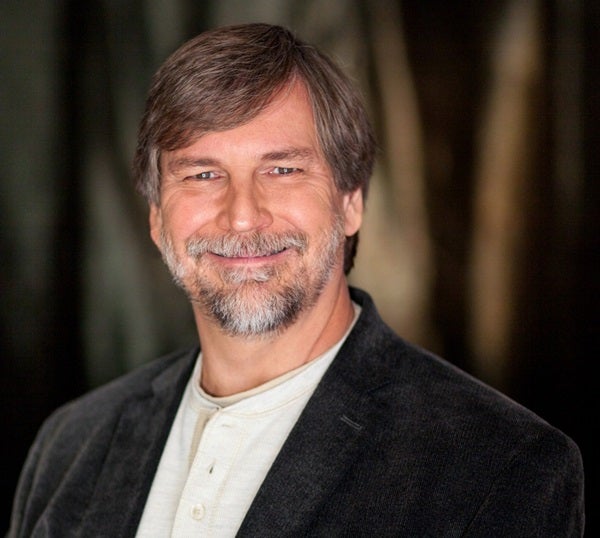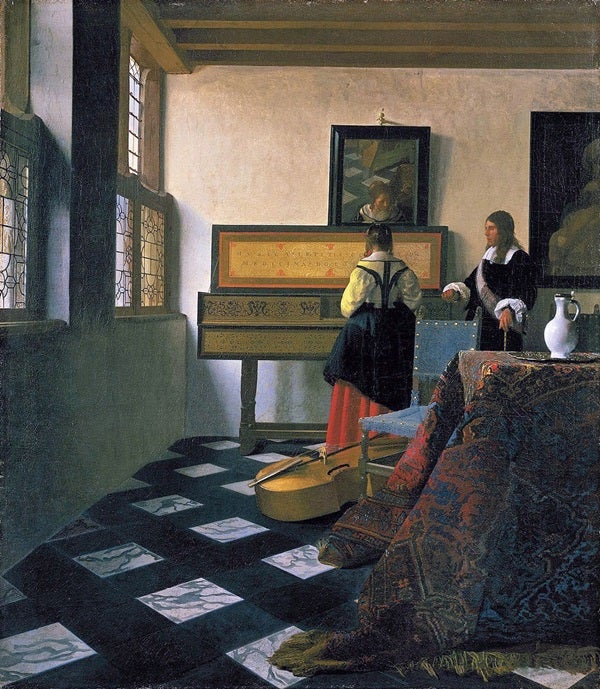But many in the room had come not to praise Hockney for his insight, but to convict him of heresy. They were offended at the suggestion that the ineffable genius of revered artists might have benefited from anything so vulgar as lenses and mirrors. One museum curator insisted that Vermeer’s attitude had been, “To hell with physics!” Characteristically witty, writer and critic Susan Sontag likened the reliance of art on optics to the reliance of sex on Viagra.
The battle lines that day were drawn between what C. P. Snow called “The Two Cultures.” On one side are art and the humanities, expressions of the human spirit; on the other side is science, the haven of cold, dehumanizing rationality. “The Two Cultures” are stamped indelibly onto the zeitgeist of our times.
Personally, I don’t get it.
Listen to conversations among scientists, and you might be surprised to catch phrases like “playing with the data,” the “beauty of an experiment,” or the “elegance of a theory.” You might hear passion about intuition or the aesthetic that guides their work.
Trade lab coats for fedoras, equations for lead sheets, and scientific jargon for the esoteric language of jazz, and you might confuse the scene with a bunch of musicians taking five during a recording session! The distinction might blur further if the discussion turned to the technical side of making and recording musical sound.
In both cases, you would be witnessing the same thing: human creativity at work.
The notion of a gulf between science and art would have puzzled Leonardo da Vinci. He and others moved beyond received wisdom — and invented modern science — precisely by applying an artist’s creativity and careful eye to questions of how the world works.
All of which raises the question: If science and art are so similar — both human expressions of the creative drive to experience and comprehend the world — then why are they viewed so differently?
The answer lies in the jury process. Art finds its value in the subjective response of its audience. In contrast, many a beautiful scientific theory has been abandoned for the simple crime of making predictions that were incorrect.
Inventor and technologist Tim Jenison had a lot to do with bringing computer animation to the world — two Emmys’ worth. Turning revolutionary technology into revolutionary art is his life’s work. When Jenison heard about Hockney’s ideas, he was intrigued. But instead of opinion, Jenison saw Hockney’s work as a scientific theory to be tested. So he set out to do just that.
Jenison’s early experiments with a mirror on a stick grew into an obsession. After years mastering everything from polishing lenses to making his own paint, all using 17th-century techniques, it was time for his grand experiment. He would attempt to paint his own version of Vermeer’s masterpiece, The Music Lesson.
Day after day, month after month, Jenison devoted himself to the demanding and tedious work. One brush stroke at a time, he used his optical device to meticulously match pigments on canvas to light from the scene. When finished, Jenison’s painting was undeniably beautiful. It also perfectly captured the precise perspective and illumination that define Vermeer’s style.
Jenison’s remarkable story is chronicled in the delightful documentary film Tim’s Vermeer. Narrated by Penn Jillette and directed by his partner, Teller, Tim’s Vermeer has received widespread critical praise.
But many in the art history community are no happier with the idea now than they were in 2001. Jonathan Jones, writing for the Guardian, pulled no punches in his scathing critique. “At last,” wrote Jones, “an art film for philistines.”
Did Jenison prove that Vermeer invented and used a forerunner of modern copy cameras? No. But Jenison did successfully demonstrate an optical method that would have allowed Vermeer to produce the unique works of art that continue to marvel us to this day.
Immersed in the scientific and artistic excitement of the Dutch Golden Age, if Vermeer did invent such a powerful technique, why wouldn’t he have used it?
I enjoyed Tim’s Vermeer. At last, a film about science and art for those who insist they are two sides of the same coin.
Jeff Hester is a keynote speaker, coach, and astrophysicist. Follow his thoughts at jeff-hester.com.











